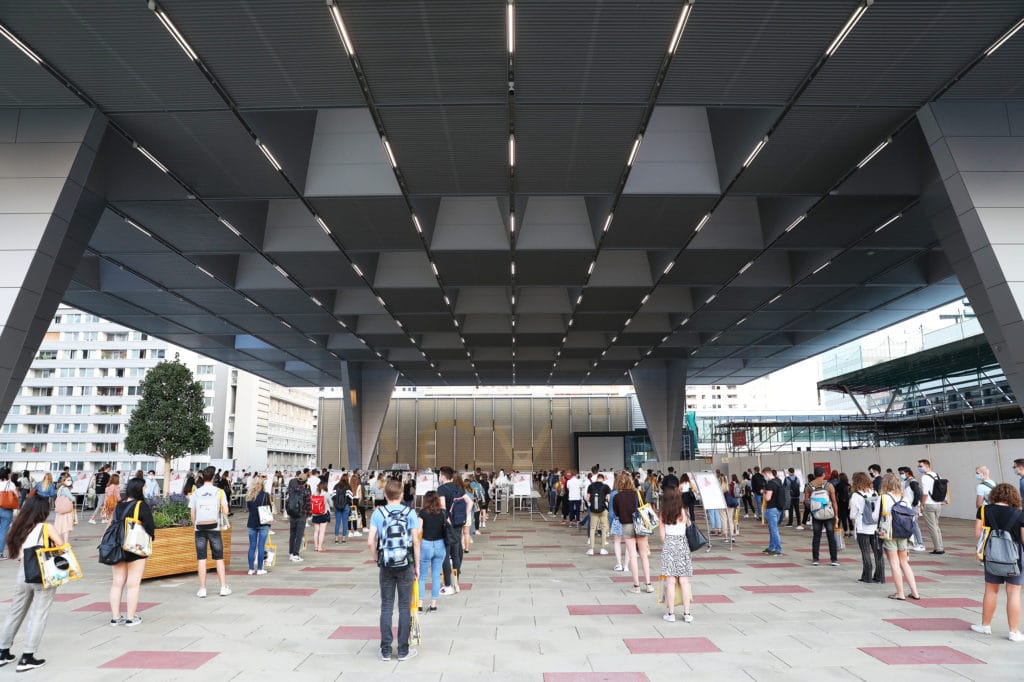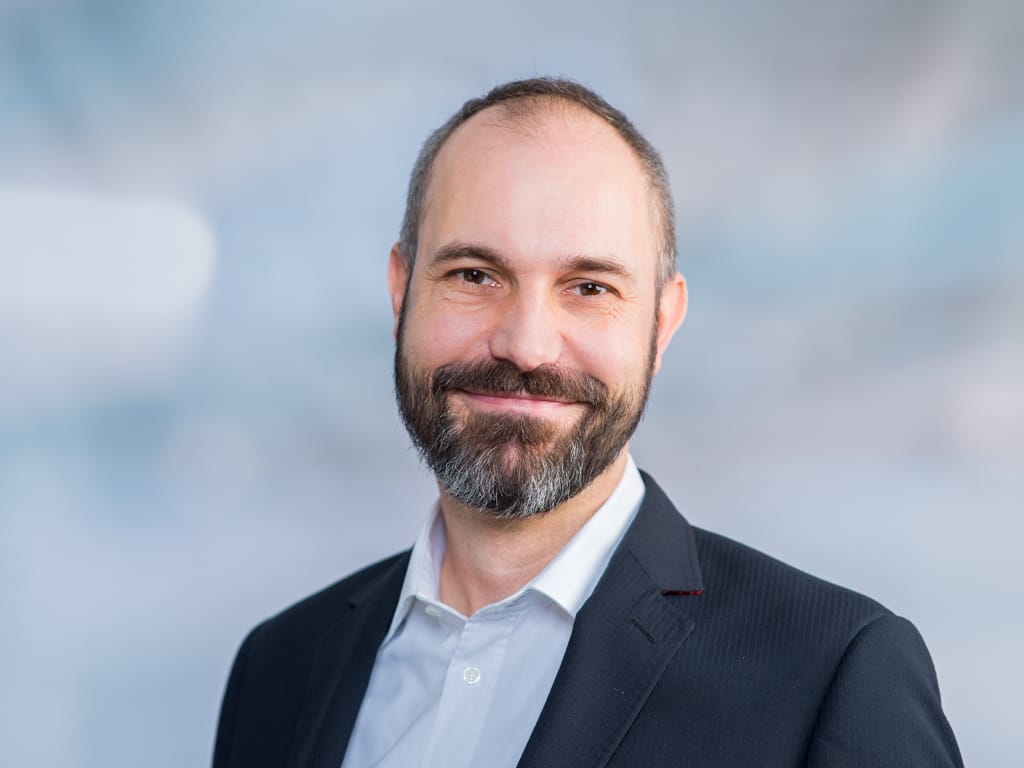Austria Center Vienna takes stock of Covid-19 pilot project: rapid tests can significantly improve the safety of events
- Corporate news

On 16 and 17 September the Austria Center Vienna conducted around 2,000 rapid tests in a pilot project in partnership with the Vienna University of Economics and Business, Arbeiter-Samariter-Bund and medical products wholesaler Alpstar. The resulting interest from event organisers, hotels, hospitals, national and international business and politicians was overwhelming. Across all industries there are high hopes for the new antigen tests. The Austria Center Vienna will make the key insights from the pilot project publicly available, in the interests of creating a repository of information which can be used as a foundation for future events.
“We wanted to use the pilot project to show that rapid tests can significantly improve the safety of events, and that their use is practicable from an organisational point of view. The overwhelming feedback and interest from all industries shows us just how much hope is being placed in the new testing system. We are very pleased to have provided this initial impetus with the support of our project partners and would like to make our insights available to all interested parties,” explained Susanne Baumann-Söllner, Managing Director of the Austria Center Vienna. Out of the 2,000 rapid tests that were handed in, five were positive. The diagnoses were subsequently confirmed in PCR tests conducted immediately after.
Rapid testing at large-scale events: viable from both an economic and organisational perspective
The central finding from the pilot project was that rapid tests are indeed practicable in real-world conditions and represent a meaningful addition to existing hygiene and safety measures. In preparation for the project, a scalable system of test lanes was developed specifically for the rapid test (see test lanes graphic).
Key figures: 30 seconds per swab, one medic per lane, results in max. ten minutes
The pilot project delivered valuable insights into the amount of time testing takes ahead of an event, as well as the number of staff needed: as a basic rule of thumb, the number of test lanes needed and time slots for participants is calculated on the basis of the 30 seconds it takes to complete each swab. Each test lane requires one medical expert to take the throat swab and two to three assistants to prepare the solution and support the test subjects. In addition, a team of paramedics is on hand at the end of the test lane to manage any positive cases. Conducting the test took an average of six to ten minutes from swabbing to receiving the test result – significantly less than the 15 minutes originally planned in.
Five positive results – daily testing at multi-day events required
A total of around 2,000 rapid tests were conducted at the event, with test subjects including students, staff members, employees of partner companies and journalists. In total, five people tested positive. After being isolated immediately, an additional PCR test was carried out before the individuals concerned were sent to quarantine at home.
On the second day of the event, one person tested positive, having presented a negative result on the first day. This particular case once again confirms that an antigen test only ever provides a snapshot of an individual’s viral load. This suggests that rapid tests should be carried out on a daily basis at multi-day events. In addition, a negative test result should never be mistaken for total protection against Covid-19 – but it is an effective tool that significantly reduces the chances of infection at events.
About IAKW-AG
Internationales Amtssitz- und Konferenzzentrum Wien, Aktiengesellschaft (IAKW-AG) is responsible for maintaining the Vienna International Centre (VIC) and operating the Austria Center Vienna. The Austria Center Vienna is Austria’s largest conference centre, with 24 halls, 180 meeting rooms, and some 26,000 m² of exhibition space, and is one of the top players on the international conference circuit.

©IAKW-AG, Ludwig Schedl
Key insights at a glance
1. Predictable lead times: 30 seconds per person
Relatively generous lead times were defined for the initial project: three time slots of 30 minutes each were planned for a maximum of 1,000 people, so the basis for the calculation was almost exactly one minute per test per lane. It turned out that the swabs can be taken much more quickly – particularly at the start of the first day when the queues were quickly processed. The Arbeiter Samariter Bund medics confirmed that 30 seconds per test subject was a reliable pointer (median value depending on target group, need to explain the procedure, etc.). This means that each test lane was able to process an average of 120 people each hour. Depending on the number of participants at an event, the specific lead time can be calculated using the number of test lanes and time slots as factors (example based on 2,000 participants: 17 test lanes with a 60-minute lead time or with two time slots of 30 minutes each, or three time slots of 20 minutes each. Longer lead times must be calculated if there are fewer test lanes). Depending on the information provided in advance (e.g. using video clips) and queueing discipline (outstanding during the test project), an average lead time of just 20 seconds can be achieved under ideal conditions.
2. Time taken to get through the test lane: six to ten minutes
Conducting the test took an average of six to ten minutes from swabbing to receiving a test result. Ideally, the test lane should be broken down into sections so that the test subjects can move along it every 30 seconds while observing distancing requirements.
3. Staffing requirements per test lane: one paramedic and at least two assistants
Each test lane requires one paramedic to take the throat swab and two to three assistants to support the testing process. This set-up was confirmed during the pilot project. An additional team of trained medical workers and at least one ambulance is required at the end of the test lanes to isolate any positive cases immediately and provide care if required. On top of this, costs such as security personnel, build-up and breakdown, cleaning, furniture and protective equipment for assistants (sanitiser and disinfectants, wipes, masks, gloves, potentially also protective suits) also need to be taken into account.
4. Proportion of positive cases: 0.25% of participants in the pilot project
Close to 2,000 tests were conducted (students, staff, customers, journalists etc.). There were five positive results, so the proportion of positive cases was around 0.25%.
5. Standardised procedure for dealing with positive cases
The following procedure proved to be effective: if the test returned a positive result, the subject was immediately isolated (with a privacy screen) and an additional PCR test was conducted directly on site by a paramedic. The individual was then reported as a suspected case and taken from the premises by the ambulance service to quarantine at home. If they travelled to the event in their own car, they were permitted to make their own way home. The PCR samples taken from the suspected cases were anonymised and taken to the lab together for analysis.
6. Validity period: daily testing required at multi-day events
On the second day, a positive result was returned from an asymptomatic test subject who had tested negative the previous day. This confirms that tests are a snapshot and that antigen testing must be carried out on a daily basis at multi-day events to maximise the chances of reliably identifying carriers at a given time.
7. Tests well received by participants
Although the rapid tests were only announced a few days before the Vienna University of Economics and Business’s introductory lectures were due to take place owing to the fact that the product used had only just come onto the market (a short explanatory video on the procedure was sent out as an accompanying measure) – the process resonated very well with all test subjects. The lecture was also streamed in another hall for individuals who were unwilling or unable to take the test. As nobody refused the test, the streaming hall remained empty. In total, 50-60% of the students invited to take part in this optional event elected to do so, in spite of the possible waiting times and the fact that they could stream it at home.
Contact

David Scheurich
Department Head Communication; Press Officer